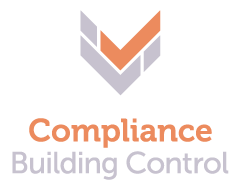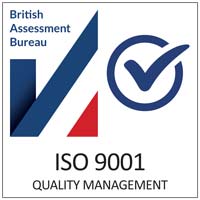Additional Services
We are pleased to be able to provide links for additional services which compliment CBC’s core Building Control service for our clients.
These are provided via selected, professional consultancies who can deliver prompt and effective services with competitive fees.
We have assessed and selected these consultants thus saving you time.
Please submit Quotation request via email link under each of the services required.
Party Wall
Extensions, loft conversions, damp-proofing works and internal refurbishment or structural alterations may all include work on a party wall. As what you do to your side of the wall may affect the other side, in many cases the consent of your neighbours is needed before work can start. In some cases, excavating or constructing foundations for a new building or extension within six metres of neighbouring properties will also require consent.
Our partner Party Wall Surveyors have extensive experience in Party Wall legislation and can offer advice for both the building owner and the adjoining owner.

Energy consultants covering Approved Documents L (energy), O (overheating), G (water), F (ventilation), and E (sound)
With an experienced team of accredited consultants, Achieve Green have been helping clients deliver energy efficient and sustainable buildings since 2009.
Part L1: SAP calculations and Energy Performance Certificates (EPC) for new-build / converted dwellings.
It is a requirement of Approved Document L1, that before starting work on site your Building Control Officer must be provided with a SAP calculation for each new-dwelling. SAP stands for ‘Standard Assessment Procedure’ and is the Government’s method for calculating the energy performance of dwellings.
Fees include:
- SAP calculations required for compliance with Part L1 of the Building Regulations (design-stage and as-built submissions);
- Additional necessary recommendations and calculations to ensure a pass is achieved every time;
- U-value calculations for submission to Building Control if required;
- An Energy Performance Certificate upon completion (new-build and conversions only);
- Comprehensive advice and support throughout the whole process; and
- All lodgement fees.
Part L1: SAP calculations for heavily glazed domestic extensions.
As part of Building Control sign-off, all new extensions must comply with Approved Document L1. This Approved Document forms part of the government’s plan to limit carbon emissions and tackle fuel poverty. In most cases the design specification for the extension will surpass the minimum allowable standards and compliance with Approved Document L1 will be straight forward. However, one common area where extensions do not automatically comply concerns the area of allowable windows, doors and roof lights: referred to as the 25% glazing allowance. In this instance, Achieve Green can provide you with a SAP calculation to demonstrate compliance with Approved Document L1 of the Building Regulations, irrespective of how much glazing is included in the design.
Part O: Simplified Method & Dynamic Thermal Modelling.
Approved Document O came into force on 15 June 2022 and establishes the requirement for the assessment of overheating risk in new-build homes. Compliance with Approved Document O can be demonstrated either by the simplified method or by dynamic thermal modelling (CIBSE TM59).
Fees include:
- Assessment of each dwelling using the simplified method for demonstrating compliance with the requirements of Approved Document O; and / or,
- Dynamic thermal modelling using CIBSE TM59 compliant thermal analysis software.
- Results to be presented in the form of a written report to the requirements of Approved Document O.
Part G: Water Calculations.
Approved Document G of the Building Regulations requires that all new dwellings have a maximum water consumption of 125 litres per person, per day. Using the Water Efficiency Calculator, which is the Government’s approved methodology for assessing water efficiency in new dwellings, Achieve Green can calculate the projected water consumption for your development. As part of this assessment, Achieve Green shall give advice on the minimum acceptable efficiency for each fitting in the dwelling, thereby ensuring a pass.
Part L1 / L2: Air Leakage Testing.
Tackling air leakage, where conditioned air is lost through gaps and cracks in the building fabric, represents an important method to improve the energy efficiency of a building. Air leakage testing is the method used to quantify the amount of air that is being lost, and is required for all new-build dwellings, and for all new-build non-domestic buildings (with a floor area greater than 500m2).
Fees include:
- A building air leakage test compliant with CIBSE TM23 and ATTMA TSL1 / TSL2;
- Building Regulations certification; and
Guidance concerning potential air leakage hot-spots and options for remedial work where necessary.
Part F: Extractor fan flow rate testing.
Achieve Green can provide a test of the installed mechanical extraction flow rate for System 1 intermittent extractor fans.
Part L2: SBEM calculations and Energy Performance Certificates (EPC) for new-build / converted non-domestic buildings.
It is a requirement of Approved Document L2, that before starting work on site your Building Control Officer must be provided with a SBEM calculation for each new-building. SBEM stands for ‘Simplified Building Energy Model’ and is the Government’s method for calculating the energy performance of non-domestic buildings.
Fees include:
- SBEM calculations required for compliance with Part L2 of the Building Regulations (design-stage and as-built submissions);
- Additional necessary recommendations and calculations to ensure a pass is achieved every time;
- U-value calculations for submission to Building Control if required;
- An Energy Performance Certificate upon completion (new-build and conversions only);
- Comprehensive advice and support throughout the whole process; and
- All lodgement fees.
Achieve Green can be your single-source provider for building regulations testing and assessment services.
New dwelling compliance pack
- Part L1: SAP calculations and Energy Performance Certificates.
- Part L1: air leakage testing.
- Part E: sound insulation testing.
- Part F: extractor fan flow-rate testing.
- Part G: water calculations.
- Part O: simplified method or dynamic thermal modelling.
All for a single competitive fee.


Thermography
Our consultant’s focus is 100% on non-destructive testing of buildings using thermography as the key tool. They have built some of the deepest knowledge of building thermography in the UK and use this to provide the best thermal imaging surveys and training to all manner of clients. Principle areas of focus include testing continuity of insulation (often with reference to Part L of Building Regulations), thermal bridging and provision of thermographic surveys compliant with BREEAM. Thermal imaging is a natural partner to other non-destructive testing methods which they either provide in house or with similarly specialised partners. These include advanced damp and leak detection and tracing, air tightness testing and aerial thermal surveys.

Sound and Air Testing
Sound insulation design and guidance – 100% pass rate. Our consultant’s goal is to work with every client to ensure they pass the sound test first time using an efficient & cost-effective design. They have a range of design services to cater for every budget from full written recommendations to a sound insulation ‘health check’, which just helps give that extra confidence that your treatments are heading in the correct direction.
Air Testing Sample Testing: Typically of interest for developers with larger developments, they offer a very popular sample air testing package. This low cost service allocates one of their senior engineers to visit site for several hours to provide sample testing on the first few plots that are nearing completion. Their engineer will work with your site team to advise on leakage areas as required to help ensure your subcontractors are sealing adequately to achieve your Design Air Permeability (DAP).



